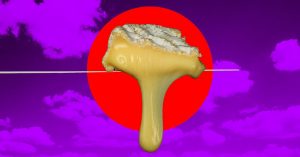
A spike in prices for U.S. dairy products has hit futures markets, which means more expensive cheese and butter for Americans may be coming.
Omicron is one culprit. Manufacturers are struggling, with the Covid-19 virus variant causing more absenteeism at dairy plants. There’s also a more long-term trend at work: milk production in the U.S. is dropping. It’s getting too expensive to feed cows with grain costs soaring, so farmers are shrinking their herds and sending animals to slaughter. For the cows that remain, they’re getting fed less, which means they’ll produce less milk. Rising labor and energy costs are also making it tougher for dairies to net profits.

“Across the country, dairy manufacturers are struggling to run with the surge of coronavirus cases, squeezing already constrained labor,” Matt Gould, editor of The Dairy Market Analyst, said in a note.
The result is the current jump in dairy futures. Butter on the Chicago Mercantile Exchange is at the highest since 2017, while whey is the priciest since 2014. Cheese and milk contracts are the most expensive in over a year. Such elevated costs could eventually filter down to consumers, and exacerbate already rampant food inflation. Milk at grocery stores is already seeing the highest prices since 2015, at an average $3.67 a gallon, according to the Bureau of Labor Statistics.

The issue of declining output isn’t limited to the U.S. Milk production is weak across all major exporters, and demand is decent to strong, said Nate Donnay, director of dairy market insight at StoneX Group.
Still, such price hikes could be temporary, Donnay said, as milk output increases seasonally in the Northern hemisphere springtime.
Meanwhile, there are already signs of dwindling dairy. Butter production in the U.S. was down nearly 10% from a year earlier according to government data, and milk powder is seeing the lowest output more than two years, Gould said. Cheese production will suffer from dairy companies delaying new manufacturing plants due to Covid-19, he said.
























